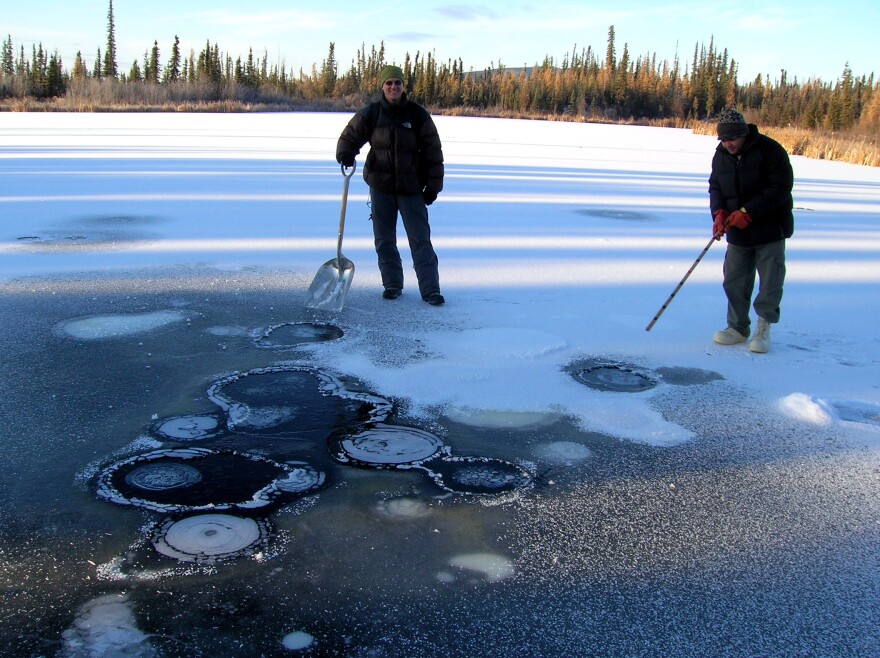A carbon time-bomb ticking away in thawing permafrost …
"Methane is a very potent greenhouse gas," University of Alaska Fairbanks ecology professor Katey Walter Anthony tells students during a field trip recorded on video by UAF. Walter Anthony has become something of YouTube phenom over the past few years, due to the many video clips showing her demonstrating how methane that’s been captured by ice on a frozen lake can be released by poking a hole in the ice and then ignited by holding a lighter next to the puncture…

“… A molecule of methane is 25 times stronger than carbon dioxide,” she tells her class just before igniting methane gas released from the bubble, which draws cheers from the students.
Walter Anthony says she doesn’t flare off the methane just to get a rise out of her undergrad students. She says it’s a sort of field test to determine where and whether methane is present in the bubbles encased in lake ice.
“Every once in a while, the gas that comes rushing out of those gas pockets in the ice puts the match out,” she said, “because there are nitrogen bubbles out there, too”

Walter Anthony has been researching the contents of those bubbles for more than 16 years now, and the 200-some frozen lakes in which they occurred, in Alaska, Canada, Sweden and Siberia. And now she’s getting a rise of a different kind with a study based on research she and five co-authors published this month in the journal Nature Geoscience.
The study was the first to employ a broad analysis of carbon released from frozen Arctic lakes to estimate the amount of carbon stored in permafrost soils and its impact on climate change.
Walter Anthony and fellow researchers employed aerial photography of the lakes and analysis of their methane emissions to estimate the amount of carbon in permafrost soils that’s been released since the mid-20th century, and how much carbon is likely to be released by the end of this century.

“People are really concerned with what we’re calling the carbon-permafrost feedback,” she said, “because permafrost contains a huge amount of carbon – there’s twice as much carbon frozen in permafrost as there is in the atmosphere.”
Walter Anthony says although permafrost soils have been releasing increasing amounts of carbon over the past 60 years, it’s a relatively small amount. But, the study predicts that will change, perhaps dramatically, by the end of the century, because the Arctic is warming so quickly it’s accelerating the pace of permafrost thawing.
“And along with that thaw, a huge quantity of carbon should be mobilized with large releases of greenhouse gases – really large,” she said.
Walter Anthony says that she and her fellow researchers can’t say when permafrost soils will begin releasing all that carbon – “though,” she says offhandedly, “I expect any day now we should start picking that up in our field measurements.”
Walter Anthony says that may mean climate scientists will have to revise the 7-and-a-half degrees Fahrenheit temperature increase that they predicted for the year 2100.
Editor's note: This story has been revised for posting online.



